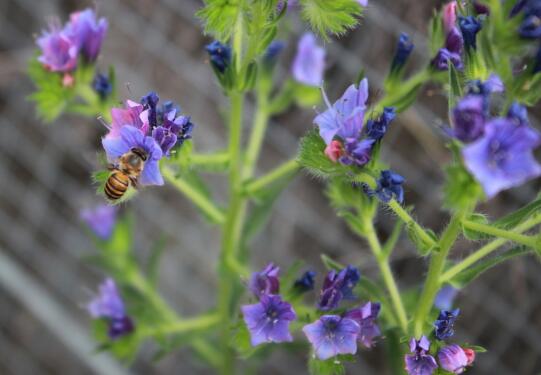How to reproduce Hemerocallis, the propagation method / ramet technique of Hemerocallis is very important.
After years of cultivation, Hemerocallis has many varieties, it has also become the most important ornamental flowers, for family breeding flower friends, how to reproduce better? Today we will learn more about the breeding method of Hemerocallis.
How does Hemerocallis reproduce

Hemerocallis is a perennial perennial herb, which can continue to grow and bloom many times, and its life span can reach more than two years. As a super adaptable plant, Hemerocallis generally propagates by means of ramet and sowing. The specific methods are as follows.
Propagation methods of Hemerocallis
1. Split propagation of Hemerocallis
1. When is the right time to split a plant
In general, the best time is after the leaves withered in autumn, or before sprouting in early spring, other times can also split, but may affect the growth of day lilies, so September-October or February-March should be chosen.
2. Ramet process
Take the plant out of the soil, dig it out to avoid injuring the root, then cut off the withered root and the excess fibrous root, divide it into several clumps, retain 3-4 plants in each clump, disinfect the root, and plant it in the soil.
After ramet, it should be moved to a cool place, even if it is watered to keep the soil moist, it can take root after 3-4 weeks, and then maintain normally according to the breeding method of Hemerocallis. Day lilies after ramets can split again after growing for 4 years. If the ramet time is right, the seedlings can blossom in the same year.
2. Sowing and propagation
1. Time
How can day lilies reproduce by sowing? The time is generally chosen after autumn, when it is relatively easy to collect seeds, and sowing is suitable for picking and sowing, which means that seeds should be sowed as soon as possible after harvest.
2. Methods
In the breeding method of Hemerocallis, sowing is usually suitable for breeding. The collected seeds are evenly sown on the sand bed, then covered with sand 2-3 cm thick, watered thoroughly and kept moist, and seedlings can emerge after 4 weeks.
It usually takes 2 years from sowing to flowering, so it is a long process. For family potted flower lovers, experts suggest using ramet propagation, which is quick and simple.
Ramet, sowing and breeding of Hemerocallis
Hemerocallis is the mother flower of our country. After cross breeding, there are many varieties of Hemerocallis, which is the largest variety of flowers in Liliaceae. Hemerocallis is generally cultivated in early spring and early March, which is mainly propagated by individual plants, and can be propagated by sowing when breeding. The editor will introduce these two breeding methods in detail for you.
Hemerocallis
I. split-plant propagation
Ramet propagation is carried out after leaf withering or before germination in early spring. Dig up the root plant and cut off the withered root and too many fibrous roots. After one ramet, it can be divided again after 4 or 5 years, and the seedlings can blossom in the same year. Generally speaking, each mother plant can be divided into 3 and 4 plants, and individual varieties, such as "Jinwa", can be divided into 6 and 7 plants.
2. Sowing and propagation
Seed propagation should be sowed in autumn and generally emerge about 4 weeks after sowing. If the summer and autumn seeds are sown immediately after harvest, the seedlings will emerge in about 20 days. The sowing seedlings blossomed after 2 years.
Sowing and propagation should be treated with sand storage in autumn and winter, the seeds germinate quickly and neatly after spring sowing, and the seedlings generally blossom for 2 years. It can also be cut with tender flower buds in summer and cut in vermiculite, which can take root in about one month and blossom the following year.
How does Hemerocallis reproduce
Growth habits of Hemerocallis
Xuan grassland is native to China, Japan, Siberia and Southeast Asia. It is strong in nature, strong in vitality, resistant to cold, likes to grow in a warm and humid environment, but also resistant to drought and semi-shady environment. Hemerocallis is not strict on soil, but the editor suggests that it is best to choose wet soil that is well drained and rich in humus.
Variety classification of Hemerocallis
There are eight types of Hemerocallis in China, namely: Hemerocallis (Golden Needle) cauliflower (yellow flower) Hemerocallis Tong's Little Hemerocallis Red Pirate Hemerocallis Haier Fan Hemerocallis Z300 Hemerocallis
Propagation methods of Hemerocallis
Hemerocallis is mainly propagated by ramets. Split propagation is carried out after the leaves have withered or before sprouting in early spring. The method is to dig up the roots of day lilies, cut off the old roots and numerous fibrous roots with scissors, and then split them. After ramet, it should be watered in time and moved into the shade to keep the soil moist. Proper fertilization should be applied during the growing period of Hemerocallis. Weeds should be removed in the first year of ramet.
Sowing and reproduction
Hemerocallis is suitable for sowing and reproduction in breeding. Sow the seeds immediately after they are collected and sprout in the spring of the following year. When sowing in spring, the seeds had better be treated with sand last autumn, which is helpful to promote the seed germination quickly and neatly.
These are the breeding methods of Hemerocallis!
- Prev

How to reproduce calendula? two propagation methods of marigold / sowing in autumn and flowering in winter
Calendula, also known as marigold, belongs to Compositae. It is a beautiful and brightly colored flower, which is deeply loved by flower friends. In life, with more and more people raising calendula, mass reproduction is imperative, so how do marigolds reproduce? Generally speaking
- Next

How to reproduce delphinium, what are the propagation methods / sowing / cutting
Delphinium is a kind of flower plant originating in Europe, which was introduced to China. Nowadays, there are many people planting it in our country, but with more and more people growing it, people are more concerned about its reproduction. So how does delphinium multiply? What are the breeding methods of swallows?
Related
- Fuxing push coffee new agricultural production and marketing class: lack of small-scale processing plants
- Jujube rice field leisure farm deep ploughing Yilan for five years to create a space for organic food and play
- Nongyu Farm-A trial of organic papaya for brave women with advanced technology
- Four points for attention in the prevention and control of diseases and insect pests of edible fungi
- How to add nutrient solution to Edible Fungi
- Is there any good way to control edible fungus mites?
- Open Inoculation Technology of Edible Fungi
- Is there any clever way to use fertilizer for edible fungus in winter?
- What agents are used to kill the pathogens of edible fungi in the mushroom shed?
- Rapid drying of Edible Fungi

